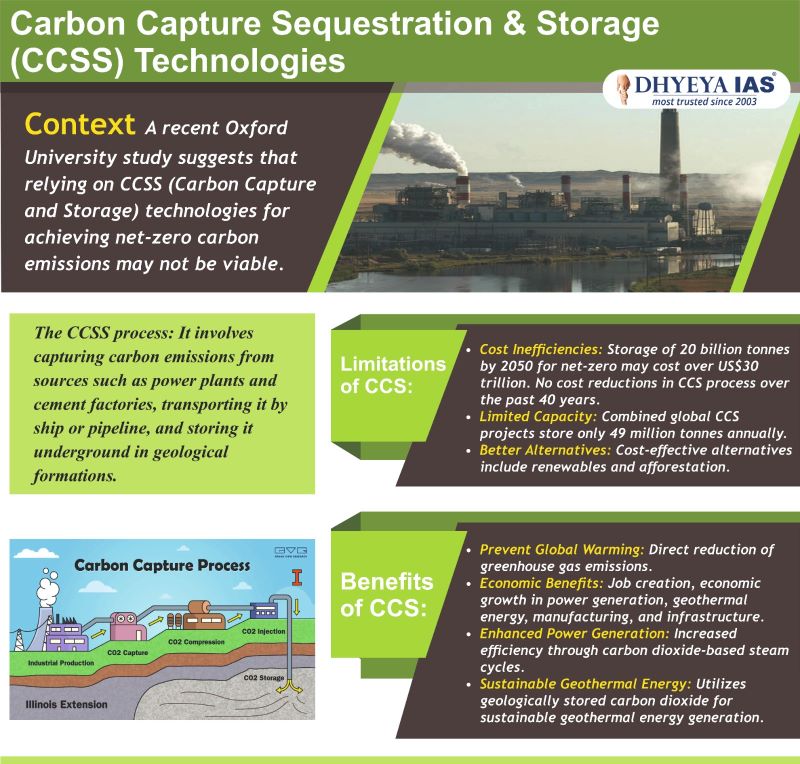
Context
A recent Oxford University study suggests that relying on CCSS (Carbon Capture and Storage) technologies for achieving net-zero carbon emissions may not be viable.
The CCSS process: It involves capturing carbon emissions from sources such as power plants and cement factories, transporting it by ship or pipeline, and storing it underground in geological formations
Limitations of CCS:
Cost Inefficiencies: Storage of 20 billion tonnes by 2050 for net-zero may cost over US$30 trillion. No cost reductions in CCS process over the past 40 years.
Limited Capacity: Combined global CCS projects store only 49 million tonnes annually.
Better Alternatives: Cost-effective alternatives include renewables and afforestation.
Benefits of CCS:
Prevent Global Warming: Direct reduction of greenhouse gas emissions.
Economic Benefits: Job creation, economic growth in power generation, geothermal energy, manufacturing, and infrastructure.
Enhanced Power Generation: Increased efficiency through carbon dioxide-based steam cycles.
Sustainable Geothermal Energy: Utilizes geologically stored carbon dioxide for sustainable geothermal energy generation.
